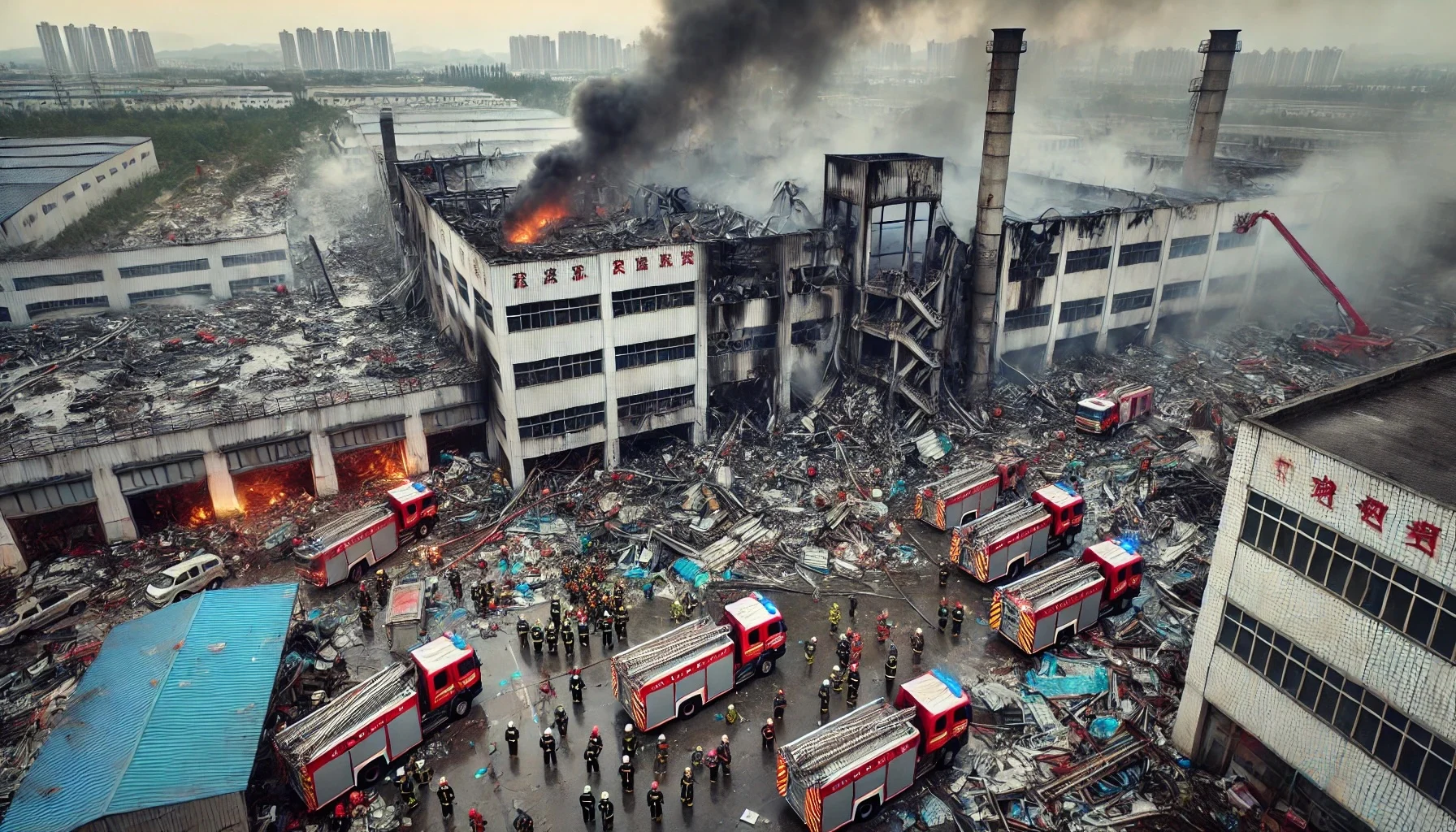
The Kunshan Factory Explosion
by: The Calamity Calendar Team
August 2, 2014
The Calm Before the Storm
On the early morning of August 2, 2014, the Kunshan Zhongrong Metal Products Co. factory buzzed with the routine activity of a typical workday. The factory, known for producing aluminum alloy wheels for major car manufacturers, employed a large workforce who were well aware of the potential dangers associated with handling fine metallic dust. Despite this, many workers carried out their tasks under inadequate safety measures and poor ventilation, a perilous combination that had been largely overlooked.
The Explosion
At precisely 7:37 AM, the factory’s calm was shattered. A powerful explosion erupted, triggered by the ignition of aluminum dust that had accumulated over time. The force of the blast was catastrophic, tearing through walls and ceilings, and unleashing a ferocious fire that rapidly consumed the facility. The immediate aftermath was chaotic, with flames engulfing the factory and workers desperately trying to escape the inferno.
Emergency response teams, including firefighters and medical personnel, rushed to the scene. Firefighters battled the blaze for several hours before it was fully contained. The scale of the disaster was evident; the factory lay in ruins, with equipment and infrastructure reduced to charred remnants.
The Human Cost
Thanks for subscribing!
The explosion’s human toll was immense. In the immediate blast, 75 workers lost their lives, and another 71 succumbed to their injuries in the following days. Over 114 workers were injured, many critically. The tragedy left a deep scar on the community, with families mourning their loved ones and grappling with the sudden loss.
The Fallout
The economic impact of the disaster was significant. The Kunshan factory was a key supplier in the automotive industry, and its destruction disrupted the supply chain for major car manufacturers, including General Motors. The financial losses were substantial, though precise figures were not disclosed.
The Chinese government and local authorities launched an immediate response, providing medical care for the injured and support for the victims’ families. Investigations soon revealed that the explosion was caused by the ignition of aluminum dust, a highly combustible material. The investigation uncovered a shocking lack of adequate safety protocols and enforcement, leading to the arrest of several factory managers held responsible for negligence.
The Aftermath and Reforms
In the wake of the tragedy, the Chinese government vowed to crack down on industrial safety violations. Nationwide inspections of factories handling combustible dust were conducted, and stricter enforcement of safety regulations was implemented. Policies were introduced to improve worker safety training and the implementation of advanced dust control technologies.
Legal proceedings saw several managers and officials prosecuted and receiving prison sentences for their roles in neglecting safety standards. The Kunshan explosion became a case study in industrial safety in China, prompting ongoing reforms and technological advancements to prevent similar incidents. Enhanced ventilation systems, regular safety drills, and improved regulatory oversight became standard practices.
A Lasting Legacy
The Kunshan factory explosion remains a sobering reminder of the importance of industrial safety. The tragedy heightened awareness about workplace safety among both workers and employers in China, leading to increased advocacy and support for safer working conditions. The reforms and heightened vigilance following the explosion have undoubtedly saved lives and continue to shape a safer future for industrial workers across the nation.
This catastrophic event, while devastating, has ultimately spurred positive change, underscoring the critical need for stringent safety measures and vigilant enforcement in all industrial operations. The legacy of the Kunshan explosion is a testament to the resilience of the human spirit and the relentless pursuit of safer working environments.
Stay in the Loop!
Become a Calamity Insider and get exclusive Calamity Calendar updates delivered straight to your inbox.
Thanks! You're now subscribed.